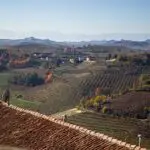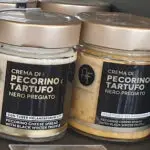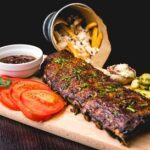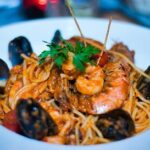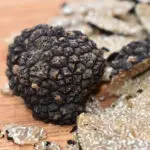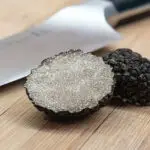While the bianchetto truffle (sometimes known as the spring white truffle) is certainly not the most popular truffle in the world, it is a great option for those that want a reasonably affordable truffle. Packed with a garlicky taste, it is a viable substitute for the more popular white alba.
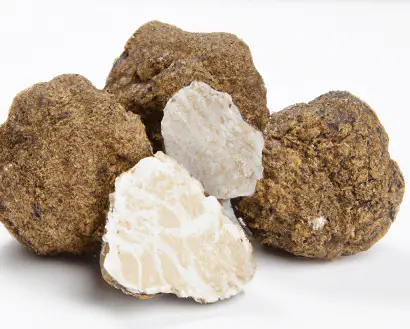
The bianchetto truffle is found mostly in Italy, although other warmer parts of Europe may have some of the white truffle scattered about. Bianchetti truffles match beautifully with garlic and cheese-heavy dishes.
On this page, we want to tell you everything that you need to know about these Spring white truffles.
What is Bianchetto?
Tuber Borchii, more commonly known as Bianchetto, is a white truffle. In the wild truffle world, it is one of the most sought-after products. People love the taste of these whitish truffles, and they pair particularly well with Italian cuisine.
In fact, as one of the more common Italian white truffle options, you will often find it mixed in with a lot of different Italian pasta dishes. It works especially well with Parmigiano Reggiano or anything that demands a strong, garlicky taste.
It is worth noting that while it is sometimes called the Italian spring white truffle, the outside of the truffle doesn’t look white. It is more of a brown color, with them taking on a rust or dark orange color as they mature a little.
Names For Bianchetto Truffle
The Bianchetto truffle is known by several names, and many truffle purists will have their own names for Bianchetto truffles. This includes:
- Binachetti
- White truffle
- Whitish truffles
- Spring white truffles
- Tuscany white truffle
- Bianchetto truffles
In rare cases, you may also see them mistaken for white alba truffles. However, do bear in mind that a white alba truffle is different, even if a white alba truffle has a similar flavor profile.
What Does a Bianchetto Truffle Taste Like?
If you have ever eaten white alba before, then Bianchetto has a very similar flavor to it. It has an intense aroma of muskiness, with an earthy quality to it. The taste is very prominent, hence why you should shave truffles rather than eat them in big ‘lumps’.
Bianchetto truffles tend to have a much more prominent garlicky taste to them, though. The garlic taste results in a strong truffle aroma that makes bianchetti truffles the perfect compliment to many garlic-heavy dishes, or those that are heavy on certain cheeses (especially Parmigiano Reggiano).
When Is Bianchetti Truffle Season?
Bichanchetti truffles can be found between January and March (i.e. in early Spring).
The later in the season they are picked, the more aroma and complex taste they have. Truffle purists insist that these truffles taste between when picked in late February and early March, although the later in the season they are picked, the higher wild truffle prices are.
Finding Bianchetto Truffle
Finding the bianchetto truffle isn’t too hard. Thankfully, you won’t have to go walking through Italy to track it down. Many stores that sell the legendary white alba truffle should also stock the bianchetto truffle. It is a cheaper alternative. You can buy it online.
Any company that sells truffles should properly label the bianchetto. You will know that you are looking at a bianchetto if it has the following features:
- Rounded, irregular shape.
- Brown or rusty color.
- Red gleba (the middle of the truffle) with white lines running through.
How Much Does Bianchetto Cost?
The cost of these fresh European truffles can vary wildly.
Prices will be dictated by the season, and how big Bianchetto yields will have been that year. On average, you are looking at around $30 per oz, although prices can be much higher than that.
Thankfully, you won’t need to add a huge amount of bianchetto to your freshly cooked food.
Are Fresh Truffles Better?
Fresh truffles will always be better than dry truffles. They will have a much more pronounced and fresher flavor to them.
How To Store Fresh Truffles
If you have fresh bianchetto truffles, then make sure that you consume them within a week.
To store them, wrap them in a paper towel and place them in the fridge. Consume as quickly as possible.
How To Cook Bianchetto Truffles
Thinly sliced truffles are the way to go here. Use an actual truffle slicer. If the truffles are too thick, then you end up with lumps of truffle which, while great, won’t spread the flavor all that well throughout the dish.
The truffle should be added in the final few minutes of the cooking process (if cooking). Give them a good mix when you add the truffle to the dish.
Ideally, you should have about 1/3rd of an oz of truffle per person the dish is meant to serve. You can go a bit lower than this, but the dish won’t taste as exciting.
Best Dishes For Bianchetti Truffles
Any sauce-based dishes work well with bianchetti truffles. This includes pasta dishes and egg dishes. This is how the Italians will regularly be consuming their bianchetti.
However, bianchetti can work well with any garlic-heavy dish. We have seen bianchetti used in everything from a good aioli all the way through to a pot roast.
Don’t be afraid to get experimental with bianchetti truffles. If you want a garlicky taste, then they are a great route to go down.
If you see a recipe that asks for a white truffle, then the bianchetti will work.
Final Thoughts
While still expensive, the bianchetto truffle is an affordable alternative to the white alba truffles. The bianchetti truffle season generally runs between January and March, which is when you can pick up these truffles at their freshest.
They are a great addition to any sauce-based dish, particularly pasta or cheese sauces.
- The Top Restaurants Specializing in Truffle Dishes - August 10, 2023
- Truffle Panna Cotta: A Decadent Dessert Recipe for Truffle Lovers - August 7, 2023
- Truffle Scrambled Eggs: A Luxurious Breakfast Delight - August 7, 2023


